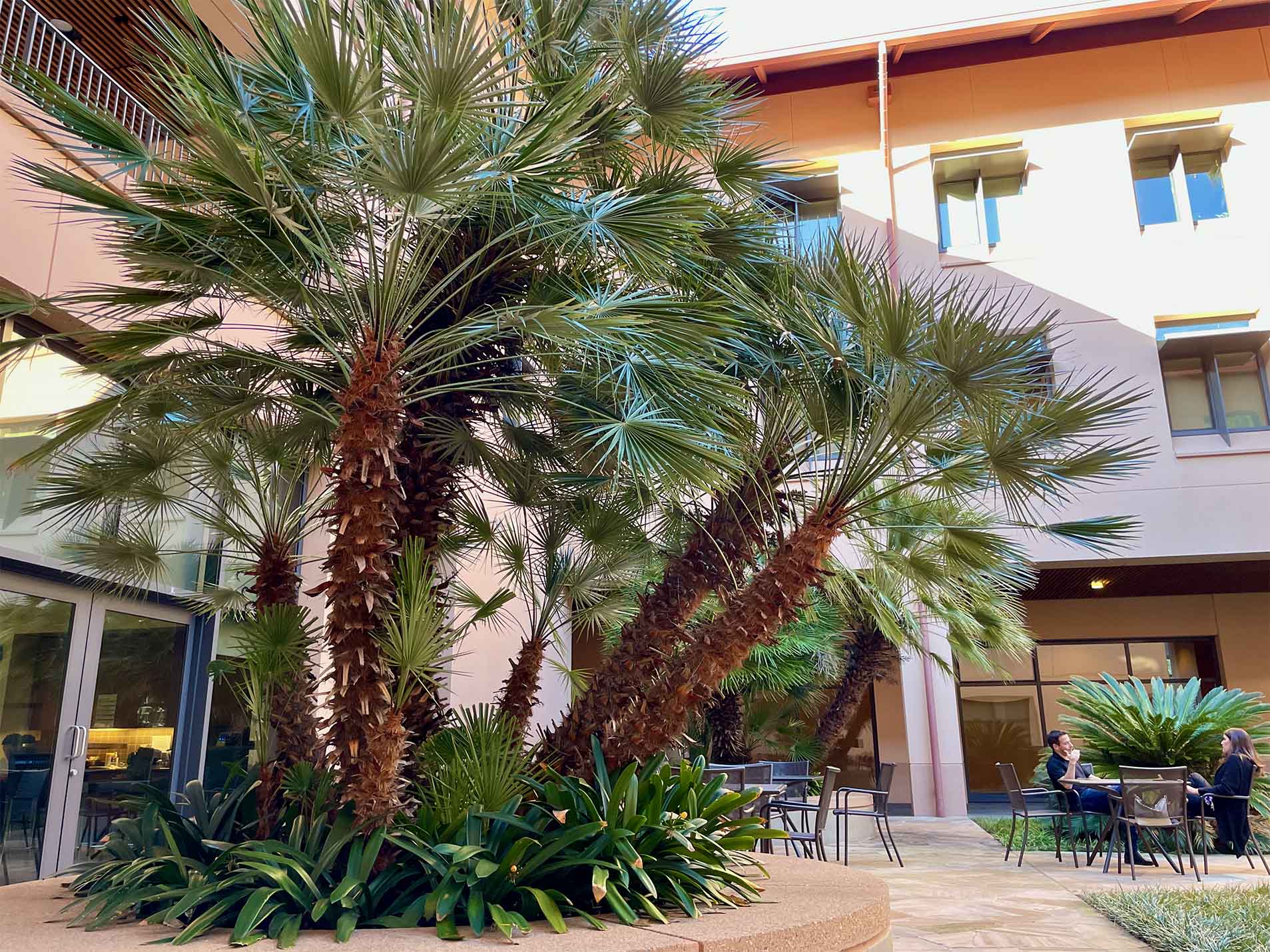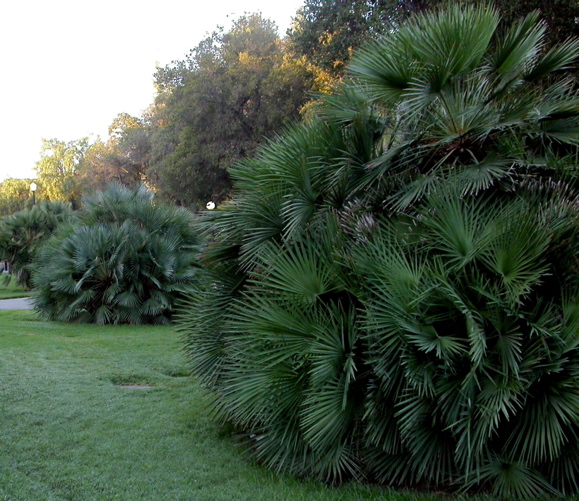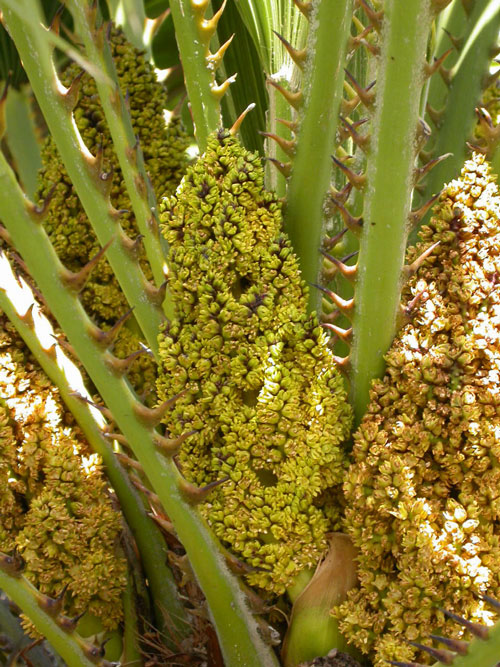Chamaerops humilis
 Mediterranean fan palm
Mediterranean fan palm


A vigorously clumping palm from the western Mediterranean, modest in stature. The leaf stalks are armed with short, sharp teeth, and the leaves, which form a fan rather than a feather, can be woven into items such as hats, fans, mats, and baskets.
Campus’s most encountered specimens are the six that march down Galvez Mall near Escondido Mall. Several grow on the New Guinea Garden’s west side and one on its east. Two others are in raised planters in the northeast courtyard of Knight Management Center and can be compared with the cycads (Cycas revoluta) nearby.
Two clumps were planted in the triangular islands next to the circular lawn in front of the Mausoleum, when the lawn was installed in 2021. Chinese fan palms (Trachycarpus fortunei) are nearby, the most cold-hardy palm species in the world; Mediterranean fan palm has the most northern native range, however.
It is interesting to see how the fans of new shoots open up. Its clumping habit does mean more space taken up on the ground, though pruning costs for its multiple stems should be much less than for a single soaring specimen of a taller species: campus specimens top out at about a dozen feet.
Its shrubby nature is expressed in the Greek in its genus name: chamai means on the ground, indicating dwarfness. (A chameleon is a dwarf or ground-hugging lion.) Rops is bush. The shrubby attribute is expressed in its specific name as well, this time in Latin: humilis means humble or lowly, literally on the earth (humus). See also Liquidambar styraciflua, where an essential quality of the species flows through the entire name.
Name derivation: Chamaerops – from Gk. chamai (dwarf) and rhops (bush); humilis – low-growing. Also see text above.
About this Entry: The main text of this entry is based on the book Trees of Stanford and Environs, by Ronald Bracewell, published 2005. Entry expanded and almost entirely rewritten; Encina NE corner specimen removed; other locations added; all locations up to date (Jan 2023, SP).




